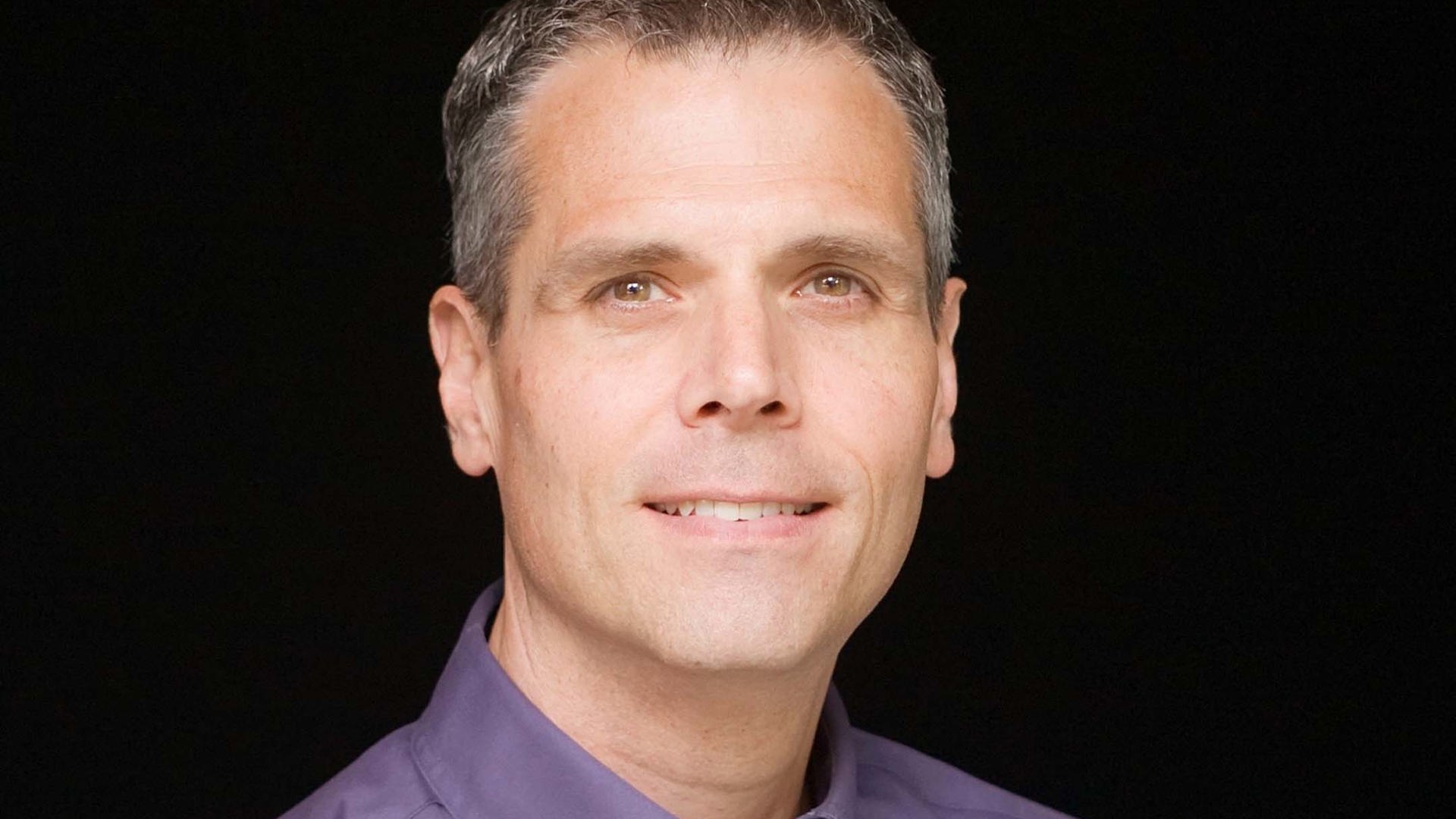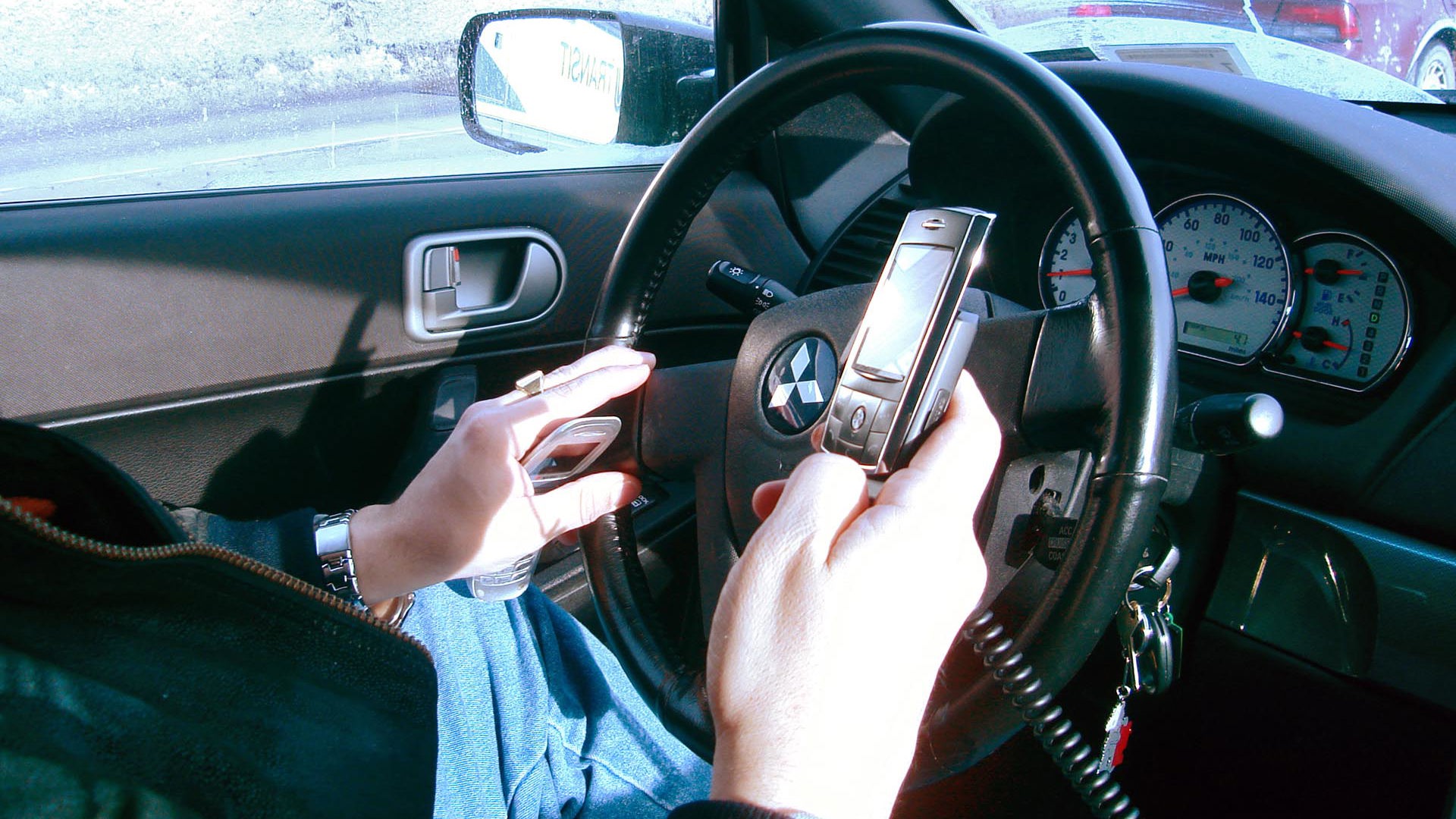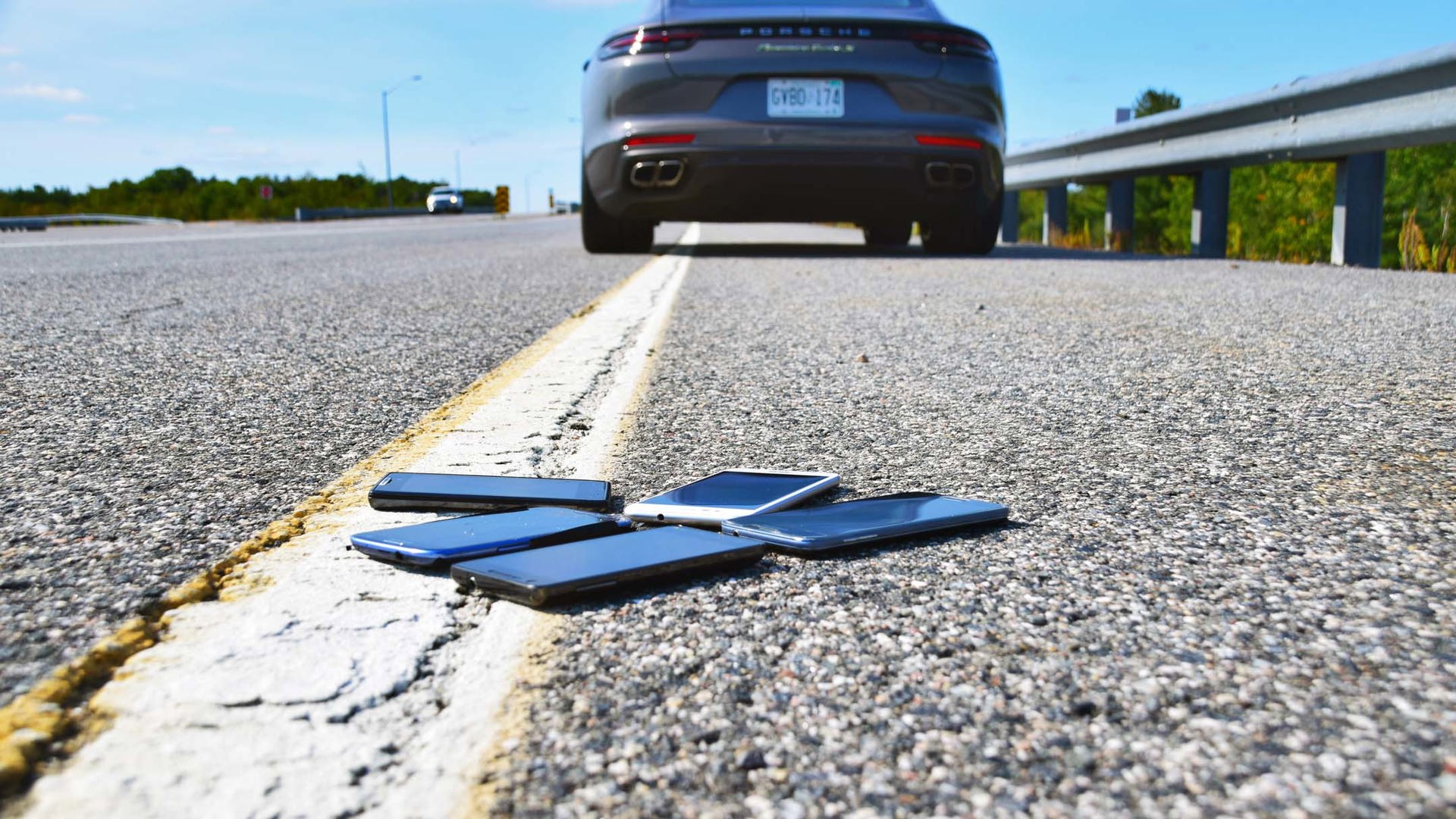“It’s actually insane. It’s sociopathic behaviour. I can’t wrap my head around this.”
“The person who was most affected by the distracted driving demonstration this year was me.”
– Andrew Younghusband, host, Canada’s Worst Driver
Andrew Younghusband has worked to rehabilitate plenty of Canada’s worst drivers – 13 seasons’ worth as the host of Canada’s Worst Driver, to be exact.
The 14th season premieres October 29 – and Younghusband says this season’s drivers are different in a way that’s indicative of a disturbing trend.
“Almost every person who comes through the rehab centre has what I would consider a cell phone addiction,” Younghusband says. “I don’t think that the difference that cell phones have made to driving can be overstated.”
When Canada’s Worst Driver launched in 2005, smartphones were not yet widespread and the show was based entirely around curing people of bad driving habits. But over time, the focus has shifted away from hard driving skills and more toward simply convincing people to put their phones down and pay attention while behind the wheel.
“The people on the show this year are talking about driving with a cell phone in their hand 100 percent of the time,” Younghusband says. “Whether it’s on or off, whether they’re looking at it or not, it’s literally in their hand, always.
“(It’s) kind of terrifying that ‘two hands on the wheel’ is not something that people are adhering to anymore.”
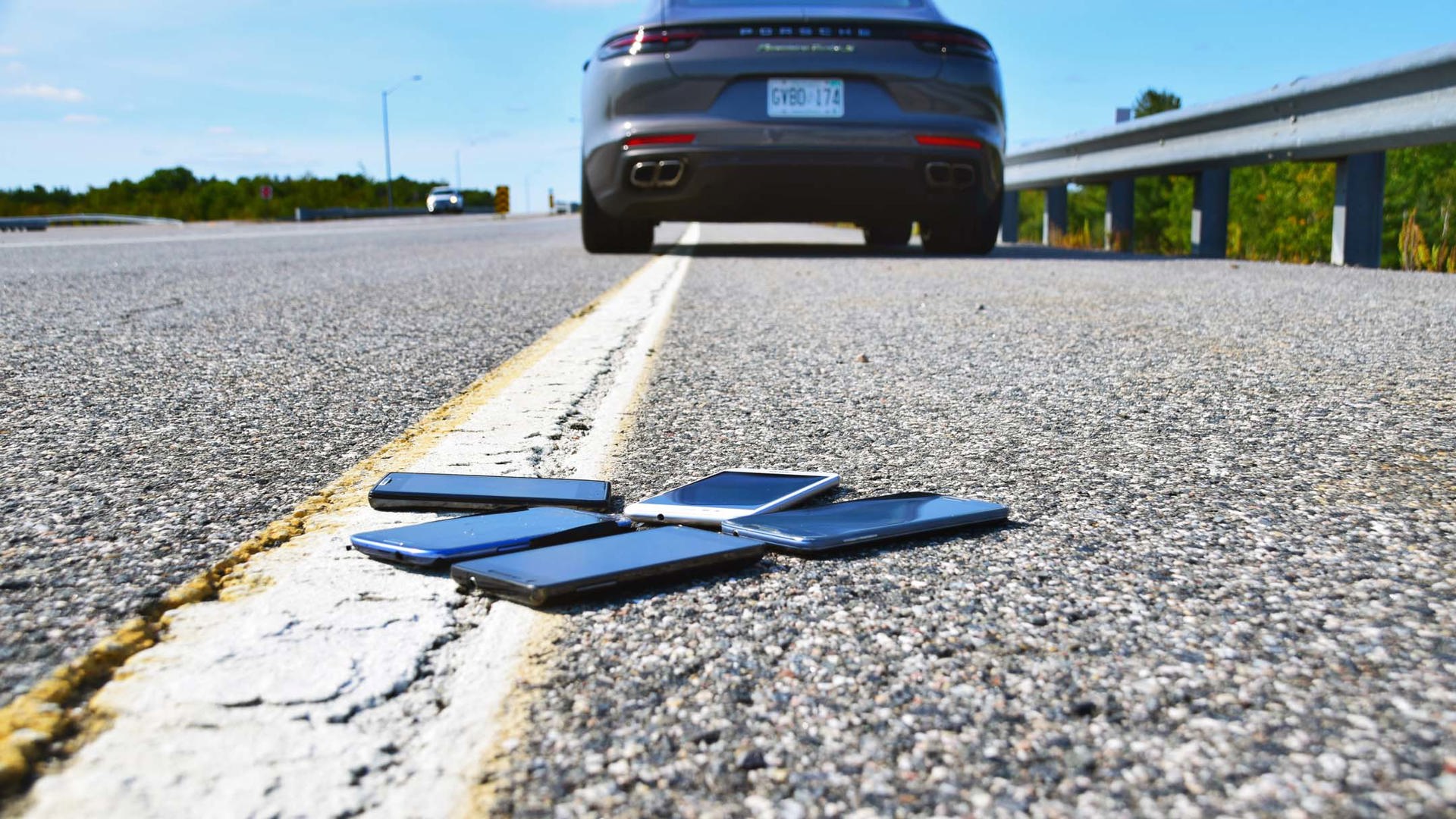
This is a concept that the show has been working on with its participants for some time. A few seasons ago, the rehabilitation team began putting the drivers through an annual distracted driving demonstration to show the impact of even briefly taking your eyes off the road while in motion.
“In past years we’ve elicited tears and really shaken people up,” Younghusband says. “They’re on a simple course that they can drive easily without distraction, and then when they start doing the distracted things they crash. They come a little bit unglued, and it’s a kind of a lightbulb moment for them.”
This year, though, Younghusband says that the distracted driving demonstration didn’t have the same effect on the drivers.
“Of the cell phone people – I think (there are) five of them – they’ve all crashed while texting in real life,” he explains. “So, it’s not a lightbulb moment for them when they hit a piece of foam. They go, ‘I know it’s dangerous.’ ‘But you still do it?’ ‘Yes.’
“And more than half of them, after the demonstration where they’ve just destroyed things by attempting to text while going around a corner, they said, ‘I know, but I’m not going to sit here and tell you that I’m not going use my phone while driving again. I’m going to.’ They literally would rather crash once a year than have that disconnected feeling of not being on your cell phone while driving.
“The person who was most affected by the distracted driving demonstration this year was me.”
It’s a common assumption that young people are entirely behind this trend. But Tim Danter, a professional driver trainer and rehabilitator and head driving instructor for CWD, says he’s seen otherwise.
“Don’t get me wrong, the biggest segment still is the new driver, the younger driver,” Danter says, “though there is definitely evidence to suggest that it’s starting to be more evident in older drivers.
“(It’s) not so much the people 60-plus, but I’m seeing clients into their 50s and they’re still looking down and interacting with (their phones), which is a surprise. You’d think that maturity and reasoning would kick in, but no.”

Danter says that the techniques currently being used in the driver training industry attempt to spell out for students how much harm these habits can do.
“Talking to them, asking them about life experiences or people that they’ve known, throwing statistics out, and not shaming them but continually being on them about how bad it is,” Danter says. “On the Tim Drives (where Danter accompanies the show’s subjects while they drive on public roads), I’m the one that’s hitting that point home and saying, ‘Why are you doing it? Here, close your eyes for five seconds and travel down the road, and let me hold the steering wheel. See what it feels like.’ ‘No, why would I do that?’ ‘Well, that’s the same thing as texting and driving.’ Give them examples that are hopefully hitting home with them.
“We can really see that some of the participants, it scares the crap out of them. They just needed that shake, someone to smarten them up in a public forum, out of their element, out of their comfort zone, and say, what the hell do you think they’re doing?”
It works for some people – in fact, this exact situation comes into play in the season premiere, when one participant sees the light and realizes he’s actually a good driver when he puts his phone away – but Younghusband says that for some of the people he’s encountered, this technique doesn’t work.
“Nothing works because they don’t care,” he says. “Cars crash so well these days that the number of crashes is going up and the number of injuries is going down.
“(We have) a 21-year-old (on the show this season) who’s written off five cars. She literally does not care. She’s got her 18-month-old baby in the car, she writes off a car, and she doesn’t care.”
Distracted driving penalties are determined by each province and territory’s Ministry of Transportation. Ontario recently announced a new three-stage penalty system that will come into effect on January 1, 2019, and will see first-time distracted driving offenders receive a fine of up to $1,000 and a three-day driver’s licence suspension along with a loss of three demerit points. A second conviction within five years will net a fine of up to $2,000, six demerit points, and a seven-day licence suspension, and a third charge and any subsequent charges within five years will garner a fine of up to $3,000, six demerit points, and a 30-day licence suspension.
This system, when implemented, will be among the most severe in Canada and brings the penalties for distracted driving more in line with drunk driving legislation, a shift in mentality that Younghusband says is needed.
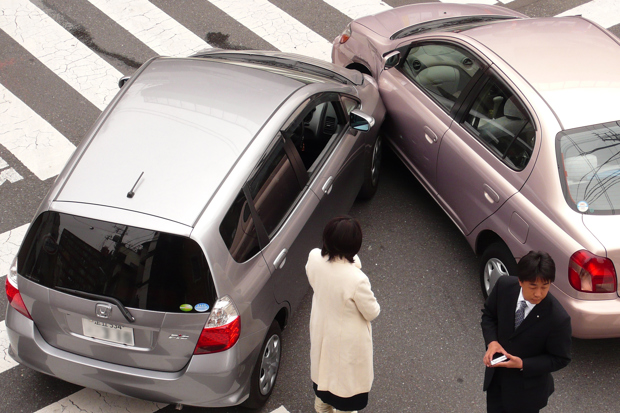
“I have an issue with cash fines,” he says. “I think that for wealthier people, it’s meaningless. They’ll just pay the money.
“There are Scandinavian countries that have sliding scales for tickets, and I think that’s where Canada should be as well. I think the wealthier you are, the bigger the ticket should be so that it actually means something. The fine that could put a poor person off the road is chump change to a rich person, and that’s just not fair.
“Licences need to be taken away when these infractions occur because that’s the only thing that will conceivably work.”
The comparison between drunk driving and distracted driving is an apt one. As drunk driving became socially unacceptable over time, related incidents slowly began to fall. Distracted driving is now rising to take its place as one of the most significant safety issues on the road today – in Ontario, deaths related to distracted driving have doubled since the year 2000, and in BC it’s related to one in four traffic deaths.
Younghusband says that a culture around distracted driving that carries as much stigma as drunk driving will take a very long time.
“Now, it’s kind of socially enforced that people don’t let drunk people drive, but people still text people who they know are driving,” he says. “The social change hasn’t even begun, and it’ll take more than a media campaign and more than a generation (to create change) because the generation who are driving now have had a phone since pre-pubescence.
“I got a cell phone when I was 36 years old. I don’t have this emotional attachment to it. I don’t really care about texting and sending pictures of sandwiches to my friends. It’s not really part of me. The young people who are on the show have had a cell phone since they were 10 and 12 years old. That phone is a part of them, and that can’t be denied.
“Changing the behaviour of these people will take more than a little bit of talking because they’re going to be reading the media campaign on their cell phones while they’re driving. It’ll take a lot longer to fix.”
Watch season 14 of Canada’s Worst Driver on Monday nights starting October 29 at 10:00 pm on Discovery.
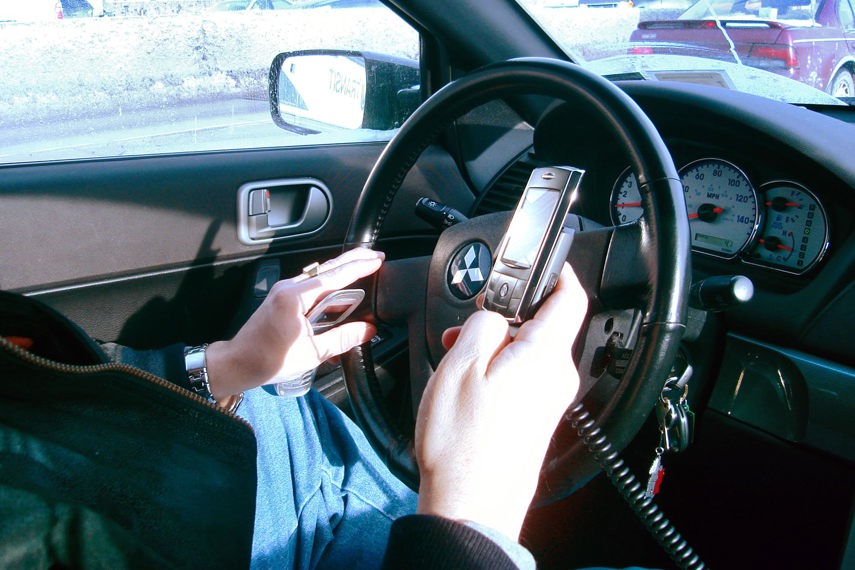
Distracted Driving Penalties by Province
British Columbia
$368 and 4 penalty points, plus a $175 ICBC Driver Penalty Point insurance premium; two or more convictions in a three-year period adds Driver Risk Premiums (DRP) to insurance that add as much as $2,000 in penalties.
Alberta
$287 fine and 3 demerit points.
Saskatchewan
$280 (includes a victims’ surcharge of $60) and 4 demerit points. Second and subsequent offences in a one-year period result in a 7-day vehicle impoundment.
Manitoba
$200 fine and a loss of 5 levels in the Driver Safety Rating (DSR) scale.
Ontario
$490 fine if settled out of court (includes a victim surcharge and the court fee), or up to $1,000 if a summons is received or if you fight the ticket in court and lose, plus 3 demerit points.
First conviction: fine of up to $1,000; 3 demerit points; 3-day driver’s licence suspension. Second conviction within five years: fine of up to $2,000, 6 demerit points; 7-day driver’s licence suspension. Third and subsequent convictions within five years: fine of up to $3,000; 6 demerit points; 30-day driver’s licence suspension.
Quebec
$300 to $600 fine on first offence; double the minimum fine or $600 on repeat offence within two years plus immediate licence suspension (3 days for first repeat offence, 7 days for second, 30 days for third); and 5 demerit points.
New Brunswick
$172.50 and 3 demerit points.
Nova Scotia
From $233.95 for a first offence to $578.95 for a third, and 4 demerit points.
Prince Edward Island
From $575 to $1,275 and 5 demerit points.
Newfoundland and Labrador
$100 fine for first offence, $400 fine for third offence, and 4 demerit points.
Yukon Territory
$500 and 3 demerit points.
Northwest Territories
$322 fine ($644 in school and construction zones), 3 demerit points, and administrative driver’s licence suspensions for second, third, and fourth distracted driving offences in a two-year period.
Nunavut
No penalty.





